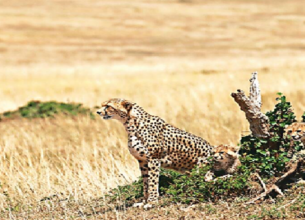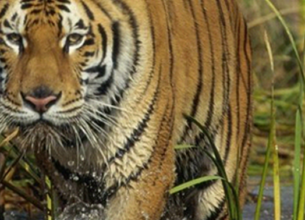AFRICAN CHEETAHS TO PROWL INDIAN FORESTS
29, Jan 2020

Prelims level : Bio Diversity & Its Threat
Mains level : GS-III Conservation, Environmental Pollution and Degradation, Environmental Impact Assessment.
Why in News?
- The Supreme Court has lifted its seven-year stay on a proposal to introduce African cheetahs from Namibia into the Indian habitat on an Experimental Basis.
About Cheetahs:
- Cheetahs (Acinonyx jubatus) are large cat of the subfamily Felinae and are considered as the fastest land animal.
- The 4 subspecies of cheetahs are Southeast African cheetah, Asiatic cheetah, Northeast African cheetah and Northwest African cheetah.
- They are found in North, Southern and East Africa, and a few localities in Iran.
- It inhabits a variety of mostly arid habitats like dry forests, scrub forests, and savannahs.
- The cheetah has been classified as Vulnerableby the IUCN; and listed under Appendix I of CITES (Convention on International Trade in Endangered Species).
Reasons behind Extinction of Cheetah:
- Loss of Grassland Habitat:Inability to breed while in captivity meant that wild cheetahs were only found in natural habitats. Thus loss of habitat meant detrimental to Cheetah population.
- Cheetahs were classified as vermin(harmful to crops and spreads diseases) during British period. This led to rewarding the act of killing of Cheetah.
- Problems like Human-Wildlife Conflict, loss of prey, and illegal trafficking, have also decimated their Numbers.
About Cheetah Reintroduction Programme:
- The last Cheetah died in Chhattisgarh in 1947 after which it was declared extinct in India in 1952.
- Since 1970s India is trying to bring back the big cat from Iran. However due to lower number of cheetahs in Iran it was not considered being feasible.
- In 2009, the reintroduction project has got a fillip and India was exploring a plan of importing the South African cheetah from Namibia for reintroduction in India.
- 3 regions were shortlisted for reintroduction including:
- The Nauradehi Wildlife Sanctuary and Kuno-Palpur Wildlife Sanctuaries in Madhya Pradesh and the Shahgarh bulge landscape in Jaisalmer, Rajasthan.

Why Reintroduction Programme Delayed?
- IUCN guidelines require a no-objection certificate for translocation of wildlife species. Besides the guidelines warn against the introduction of alien or exotic species. Finally in December 2018, IUCN gave no-objection certificate for translocation.
- The reintroduction plan to Kuno-Palpur Wildlife Sanctuary hit a roadblock as it was also been shortlisted for introduction of Asiatic Lions from Gir forest in Gujarat. A petition was filed in the Supreme Court with respect to this and now it has lifted its stay order.
- Lack of funds hindered the reintroduction project in Nauradehi sanctuary in MP. Recently MP has shown interest in revival of the cheetah reintroduction project.
Implications of the Reintroduction:
- Reintroducing cheetahs in India will help relieve pressure on the species by creating additional habitat, which the cheetah desperately needs to survive.
- It will also help increase the species genetic diversity.
- Being one of the oldest of the big cat species, with ancestors that can be traced back more than five million years to the Miocene era.
- With great speed and dexterity, the cheetah is known for being an excellent hunter, its kills feeding many other animals in its ecosystem—ensuring that Multiple Species Survive.














